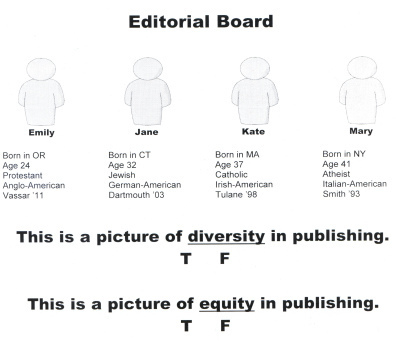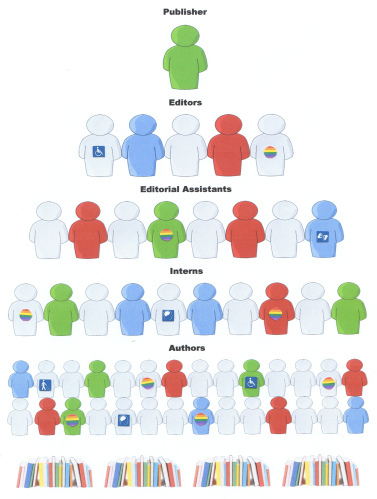Zetta Elliott's Blog, page 67
March 24, 2013
black girl hero
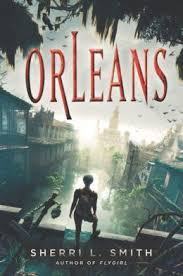 Bitch Magazine is running a new discussion series on their blog: “Do Girls of Color Survive Dystopia?” Asian mama Victoria Law worries that her daughter—a voracious reader with a penchant for speculative fiction—won’t see herself in the books she loves. In the comments section I left a link to our African American spec fic list of novels, and Stacy Whitman posted her list too. An anonymous teen left this comment at the end:
Bitch Magazine is running a new discussion series on their blog: “Do Girls of Color Survive Dystopia?” Asian mama Victoria Law worries that her daughter—a voracious reader with a penchant for speculative fiction—won’t see herself in the books she loves. In the comments section I left a link to our African American spec fic list of novels, and Stacy Whitman posted her list too. An anonymous teen left this comment at the end:
I’m a teenager and your daughter might like Legend by Marie Lu, which has an Asian American protagonist and love interest. It’s a dystopian retelling of Les Miserables, and it’s quite good. I read religiously and even I can’t think of a YA book with a black girl hero. When I grow up, I’ll write one.
Please do! I’m keeping my fingers crossed that The Deep, with its kick-ass black girl hero, will be out before the end of this year…


March 10, 2013
at a loss
 After writing close to 2000 words yesterday, I finally finished The Deep! I wrapped up shortly after midnight, falling just shy of 47K words. I thought I might work on revisions today but find I’m at a loss for words. Even this post will be short because I am TIRED. Went for a walk/run with a friend this morning followed by brunch, and then caught up with another friend on Skype. And then CRASHED. Will try to get some grading done tonight and then I have to prep for my two school visits tomorrow morning. Spring break is two weeks away and I definitely feel ready for a few days off, though I have another writing project waiting in the wings. I filed my taxes this weekend and got a reality check—my writing income was only $20K, which clearly isn’t enough to live on. I need to start thinking about how to shift the balance so that I don’t rely on teaching to cover most of my expenses. January marked the tenth anniversary of my graduation from NYU, and I don’t ever regret getting my PhD but wonder what my degree will be worth in another ten years. The publishing industry is in crisis and one could argue that the academy is, too…for now the goal is simply to keep writing!
After writing close to 2000 words yesterday, I finally finished The Deep! I wrapped up shortly after midnight, falling just shy of 47K words. I thought I might work on revisions today but find I’m at a loss for words. Even this post will be short because I am TIRED. Went for a walk/run with a friend this morning followed by brunch, and then caught up with another friend on Skype. And then CRASHED. Will try to get some grading done tonight and then I have to prep for my two school visits tomorrow morning. Spring break is two weeks away and I definitely feel ready for a few days off, though I have another writing project waiting in the wings. I filed my taxes this weekend and got a reality check—my writing income was only $20K, which clearly isn’t enough to live on. I need to start thinking about how to shift the balance so that I don’t rely on teaching to cover most of my expenses. January marked the tenth anniversary of my graduation from NYU, and I don’t ever regret getting my PhD but wonder what my degree will be worth in another ten years. The publishing industry is in crisis and one could argue that the academy is, too…for now the goal is simply to keep writing!


March 5, 2013
in their own words
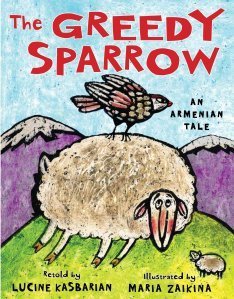 There are two fantastic reports on our diversity panel at the NYPL. You can read Mahnaz Dar’s article over at School Library Journal (which includes a great photo of all of us) and Lucine Kasbarian has written a thorough summary for the We Love Children’s Books blog. Lucine is an author and advocate for greater diversity in children’s literature and she’ll be continuing the conversation next month at the Armenian Library and Museum of America in Watertown, MA. You can find details about the April 2 event featuring Lucine in dialogue with Library Journal editor Wilda Williams on ALMA’s calendar.
There are two fantastic reports on our diversity panel at the NYPL. You can read Mahnaz Dar’s article over at School Library Journal (which includes a great photo of all of us) and Lucine Kasbarian has written a thorough summary for the We Love Children’s Books blog. Lucine is an author and advocate for greater diversity in children’s literature and she’ll be continuing the conversation next month at the Armenian Library and Museum of America in Watertown, MA. You can find details about the April 2 event featuring Lucine in dialogue with Library Journal editor Wilda Williams on ALMA’s calendar.


March 4, 2013
Fund…Feel…Forward
Support Women Writers of African Descent TODAY – ONLY 10 DAYS LEFT!
DRAFT PROGRAM NOW AVAILABLE ONLINE
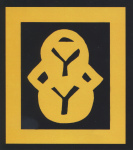 Yari Yari Ntoaso: Continuing the Dialogue – An International Conference on Literature by Women of African Ancestry is a free major symposium that will put writers, critics, and their readers from across Africa, the USA, Europe, and the Caribbean in dialogue with each other in Accra, Ghana, May 16-19, 2013. The public can help support authors’ participation at www.indiegogog.com/owwa and can register at http://www.owwainc.org/gettingthere.html
Yari Yari Ntoaso: Continuing the Dialogue – An International Conference on Literature by Women of African Ancestry is a free major symposium that will put writers, critics, and their readers from across Africa, the USA, Europe, and the Caribbean in dialogue with each other in Accra, Ghana, May 16-19, 2013. The public can help support authors’ participation at www.indiegogog.com/owwa and can register at http://www.owwainc.org/gettingthere.html
WHY FUND?
Where does your money go? Most of our 50+ participants are paying their own way to Ghana through their jobs, their own finances, or other fundraising. But a number of our participants who are not university professors and not in the US or Europe are having a hard time raising their travel costs. Money from the online fundraising campaign will support writers who do not have other means to get to Yari Yari – writers from countries like Zimbabwe, Kenya, and Nigeria – and independent writers in the USA. Help us ensure that diverse voices are present at Yari Yari!
WHAT WILL YOU FEEL?
It’s true; Yari Yari is about feeling good – you’ll feel great when you see the program [in the “gallery” section at www.indiegogo.com/owwa ] You’ll also feel great when you see what the thank-you gifts are for your donations – bags, dvds, signed books, and other fun stuff. By giving any amount, you’ll be added to our YYN list, so even if you can’t attend the conference you’ll receive information about where you can find photos, text, and other updates we’ll post online from Accra. In fact, you can see lots of photos, videos, and a full list of participants – as well as the program – right now in our “gallery” at www.indiegogo.com/owwa
FORWARD…
Please forward this email to your friends, colleagues, and the writers and readers you know. (Social media mavens, please “share” our Facebook posts and “retweet” our tweets!)
We have less than two weeks left – the more money we raise, the more writers we can help. Please give what you can now at www.indiegogo.com/owwa (checks also accepted; see below).
THANK YOU!
The OWWA Executive Board of Directors
OWWA is deeply saddened by the loss of its President and Co-Founder, Jayne Cortez, the amazing poet, performer, and activist described by The New York Times as “one of the central figures of the Black Arts Movement.” The Cortez-Edwards family encourages donations in Jayne’s name to OWWA. Donations are tax-deductible and can be made at www.indiegogo.com/owwa or mailed to
P.O. Box 652; Village Station; New York, NY 10014.


March 3, 2013
see what we saw
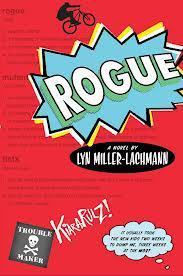 If you were at the NYPL yesterday for Betsy Bird’s Children’s Literature Salon then you know that we had a full house (all 80 seats were filled!) and people came ready to both listen and share their insights and experiences. Betsy is an expert moderator, which made it easy for those of us on the panel to share our thoughts on diversity in children’s literature. I met editor Connie Hsu for the first time, and learned about how her experience growing up in Alabama continues to influence her decisions as an editor. Connie’s aware of the importance of tradition but she’s also looking for what’s new, which is encouraging. I was *so* excited to finally meet Sofia Quintero, fierce author/filmmaker/activist and cancer survivor—I had to stop myself from reaching over to high-five her every time she made a brilliant point about the coded terms (“mainstream,” “cross-over”) used to conceal racialized power dynamics in publishing. Sofia works with Book Up and she told us about an experience taking a group of kids from the Bronx into the Barnes & Noble in Tribeca. “Why are there more pictures of zombies on book covers than people of color?” After the panel ended, I met Allie Jane Bruce, a children’s librarian at Bankstreet College of Education who let me know that she works with children who are just as outraged about the lack of diversity in publishing. I’m hoping to meet those young people and hear about their strategies for creating change. During the Q&A session we revisited the issue of David Levithan’s Teen Author Festival, which continues to be overwhelmingly white despite repeated complaints. So how DO we create change?
If you were at the NYPL yesterday for Betsy Bird’s Children’s Literature Salon then you know that we had a full house (all 80 seats were filled!) and people came ready to both listen and share their insights and experiences. Betsy is an expert moderator, which made it easy for those of us on the panel to share our thoughts on diversity in children’s literature. I met editor Connie Hsu for the first time, and learned about how her experience growing up in Alabama continues to influence her decisions as an editor. Connie’s aware of the importance of tradition but she’s also looking for what’s new, which is encouraging. I was *so* excited to finally meet Sofia Quintero, fierce author/filmmaker/activist and cancer survivor—I had to stop myself from reaching over to high-five her every time she made a brilliant point about the coded terms (“mainstream,” “cross-over”) used to conceal racialized power dynamics in publishing. Sofia works with Book Up and she told us about an experience taking a group of kids from the Bronx into the Barnes & Noble in Tribeca. “Why are there more pictures of zombies on book covers than people of color?” After the panel ended, I met Allie Jane Bruce, a children’s librarian at Bankstreet College of Education who let me know that she works with children who are just as outraged about the lack of diversity in publishing. I’m hoping to meet those young people and hear about their strategies for creating change. During the Q&A session we revisited the issue of David Levithan’s Teen Author Festival, which continues to be overwhelmingly white despite repeated complaints. So how DO we create change?
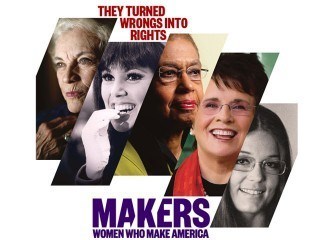 I watched Makers: Women Who Make America last week and at the end of the 3-hour documentary on the women’s movement found myself feeling rather blue. A couple of black feminists were included in the film and one Latina, but no Asian Americans and no American Indians. It was basically white middle-class women talking about white middle-class women. One scholar was asked to identify the movement’s limitations and she said that the feminist movement had failed to address the needs of working-class women, which has only increased the suffering of women and children living in poverty. White middle-class women have a long history of working with people of color to create change (abolition, the civil rights movement), but there have also been times when white women chose to throw people of color under the bus in order to preserve their own privilege. White middle-class women seem to dominate the children’s publishing industry, and so it was heartening to have several white women approach me after the panel to share their activism and/or to ask about where to start. When white women rise up, they’re a formidable force so I do hope we can stir them out of complacency and into action. We need more allies!
I watched Makers: Women Who Make America last week and at the end of the 3-hour documentary on the women’s movement found myself feeling rather blue. A couple of black feminists were included in the film and one Latina, but no Asian Americans and no American Indians. It was basically white middle-class women talking about white middle-class women. One scholar was asked to identify the movement’s limitations and she said that the feminist movement had failed to address the needs of working-class women, which has only increased the suffering of women and children living in poverty. White middle-class women have a long history of working with people of color to create change (abolition, the civil rights movement), but there have also been times when white women chose to throw people of color under the bus in order to preserve their own privilege. White middle-class women seem to dominate the children’s publishing industry, and so it was heartening to have several white women approach me after the panel to share their activism and/or to ask about where to start. When white women rise up, they’re a formidable force so I do hope we can stir them out of complacency and into action. We need more allies!
Speaking of allies, it was great to see Lyn Miller-Lachmann at yesterday’s event. Lyn is an award-winning YA author and core committee member of See What We See, the social justice advocacy group that generated a lot of interest during the panel. She’s got a new book, Rogue, coming out next month and I was thrilled to get a copy yesterday. Please support the writers who are fighting for change!


March 2, 2013
NYPL Diversity Panel graphics
This afternoon I will be on a diversity panel at the NYPL. I thought I’d post some of my slides for those of you who are unable to attend. A full report will be posted tomorrow…
The US Children’s Publishing Industry:
Is the door open or closed?
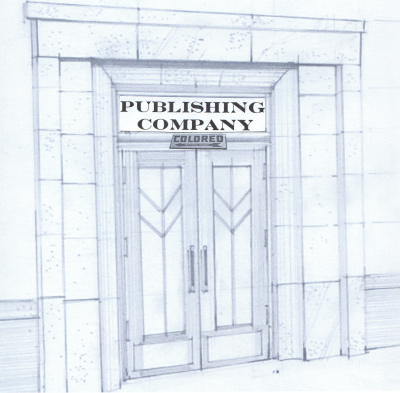
My thoroughly unscientific, simplified representation of diversity in publishing in 2013 (based on observation and anecdotal evidence):
 I believe there’s a direct link between limited diversity in the publishing profession and the lack of diversity in books for young readers. Although it is important for white authors to learn how to accurately represent people of color in their work, that alone will NOT change the status quo. I’m wary of groups whose goal is to “celebrate diversity” without also promoting equity.
I believe there’s a direct link between limited diversity in the publishing profession and the lack of diversity in books for young readers. Although it is important for white authors to learn how to accurately represent people of color in their work, that alone will NOT change the status quo. I’m wary of groups whose goal is to “celebrate diversity” without also promoting equity.
What IS the difference between diversity and equity? Diversity focuses on difference but equity focuses on fairness. These definitions come from the UC Berkeley website:
Diversity includes all the ways in which people differ, and it encompasses all the different characteristics that make one individual or group different from another. It is all-inclusive and recognizes everyone and every group as part of the diversity that should be valued. A broad definition includes not only race, ethnicity, and gender — the groups that most often come to mind when the term “diversity” is used — but also age, national origin, religion, disability, sexual orientation, socioeconomic status, education, marital status, language, and physical appearance. It also involves different ideas, perspectives, and values.
Equity is the guarantee of fair treatment, access, opportunity, and advancement for all…while at the same time striving to identify and eliminate barriers that have prevented the full participation of some groups. The principle of equity acknowledges that there are historically underserved and underrepresented populations and that fairness regarding these unbalanced conditions is needed to assist equality in the provision of effective opportunities to all groups.
The first step in creating greater diversity and equity in the publishing industry involves developing a vision of progress. Here’s what I hope the industry will look like in 2020:
What would YOUR ideal children’s literature community look like?
The UK Publishing Equalities Charter offers specific actions groups can take to promote equality and diversity. Learn more at equalityinpublishing.org
February 24, 2013
end of the road
 Somebody keeps moving the goal line. And that somebody, of course, is me. I’ve written 3,000 words this weekend and figure if I continue to write a thousand words a day, I will finish The Deep before this month ends (exceeding my self-imposed 40K-word limit). I’ve worked the ending out in my mind but getting there isn’t as easy as it seems—or as quick. I’ve got Nevis on the brain, possibly because I met with my faculty writing mentor last week and I know I am *supposed* to be working on The Hummingbird’s Tongue this semester. Then my mother sent me an email and asked when the sequel to A Wish After Midnight will be ready—her friends are eager to read more about Genna and Judah. Then yesterday, while waiting for the train, I started
Somebody keeps moving the goal line. And that somebody, of course, is me. I’ve written 3,000 words this weekend and figure if I continue to write a thousand words a day, I will finish The Deep before this month ends (exceeding my self-imposed 40K-word limit). I’ve worked the ending out in my mind but getting there isn’t as easy as it seems—or as quick. I’ve got Nevis on the brain, possibly because I met with my faculty writing mentor last week and I know I am *supposed* to be working on The Hummingbird’s Tongue this semester. Then my mother sent me an email and asked when the sequel to A Wish After Midnight will be ready—her friends are eager to read more about Genna and Judah. Then yesterday, while waiting for the train, I started 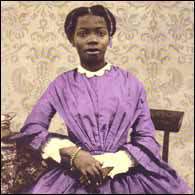 thinking about my niece and how she hasn’t yet read The Secret Garden. I have an illustrated copy and wondered if I should send it to her, but then I wished I could send her a book that could serve as a mirror for her pretty brown self. Could I adapt the story and set it in the Caribbean? Or what if I combined my interest in Sarah Bonetta Forbes with my love of magic and gardens? A little girl is brought from Africa to England and is placed at an estate where she discovers a secret and makes new friends…This is what happens when I’m nearing the end of a project—my anxiety kicks up and I start looking ahead instead of rooting myself in the moment. Yesterday I came home from grocery shopping and found a sequel to The Secret Garden was on TV. I started to watch it and then switched to the 1949 black and white version of the original, which is on YouTube. Then I watched a three-hour special on gun violence in schools,
thinking about my niece and how she hasn’t yet read The Secret Garden. I have an illustrated copy and wondered if I should send it to her, but then I wished I could send her a book that could serve as a mirror for her pretty brown self. Could I adapt the story and set it in the Caribbean? Or what if I combined my interest in Sarah Bonetta Forbes with my love of magic and gardens? A little girl is brought from Africa to England and is placed at an estate where she discovers a secret and makes new friends…This is what happens when I’m nearing the end of a project—my anxiety kicks up and I start looking ahead instead of rooting myself in the moment. Yesterday I came home from grocery shopping and found a sequel to The Secret Garden was on TV. I started to watch it and then switched to the 1949 black and white version of the original, which is on YouTube. Then I watched a three-hour special on gun violence in schools, 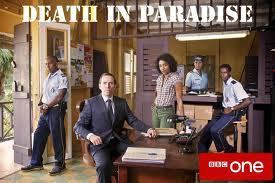 which included an interview with a teary Arne Duncan. Then the news. Then Death in Paradise, this problematic British crime show set in the Caribbean. Then my favorite Irish film Once. The amazing thing is that all this television consumption doesn’t stop me from writing. In a way, the background noise helps me to focus on the novel. That’s what I tell myself, anyway. My students turn in their papers on Monday so then I’ll have to switch gears again and get my grading done. And, of course, our diversity panel at the NYPL is this coming Saturday. “There’s enough time.” That’s my new mantra. I’m having lunch with a group of friends today and part of me wants to bail. I need time to write! But I also need to get out of my head for a while—and I need to get these cupcakes out of my apartment. This is day twelve without cake…only 28 days to go!
which included an interview with a teary Arne Duncan. Then the news. Then Death in Paradise, this problematic British crime show set in the Caribbean. Then my favorite Irish film Once. The amazing thing is that all this television consumption doesn’t stop me from writing. In a way, the background noise helps me to focus on the novel. That’s what I tell myself, anyway. My students turn in their papers on Monday so then I’ll have to switch gears again and get my grading done. And, of course, our diversity panel at the NYPL is this coming Saturday. “There’s enough time.” That’s my new mantra. I’m having lunch with a group of friends today and part of me wants to bail. I need time to write! But I also need to get out of my head for a while—and I need to get these cupcakes out of my apartment. This is day twelve without cake…only 28 days to go!


February 18, 2013
feast or famine
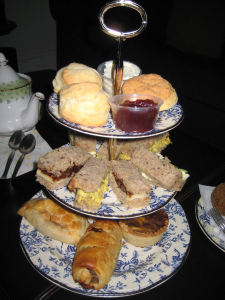 My good friend Gabrielle says an artist must learn to “cultivate selfishness.” This is particularly difficult for women of color artists, but my friends and I are actively working at making space in our lives for our art. I wrote 1500 words this weekend and spent part of today cutting sections of The Deep that no longer work with the constantly evolving narrative. I’ve completed eight chapters, which means I have just three to go (according to my outline, which also changes), and last night I had a vision of the novel’s conclusion—yes, I *saw* it and only hope that image stays in my mind *and* works with the unfolding chain of events. Creating time to write means leaving plenty of time in each day for dreaming, and that means I’ve had to learn to say NO even when part of me wants to say YES. Last November I was set to moderate a panel at the second A Is for Anansi conference at NYU when I received an invitation to conduct a writing workshop for Girls Write Now on the exact same day. I accepted the invitation and in the middle of the conference dashed up to 34th St. to talk about how I write historical fiction. Today I made it until 4pm before a chronic condition required me to lie down. I’m on a twelve-hour cycle it seems, because the same pain woke me up at 3:30am this morning. When the pain subsided, I decided to run some errands. The store was just two train stops away so I decided to walk home and I’d only gotten two blocks up Flatbush Avenue when a breathless young white woman popped in front of me and asked, “Are you an author?” I nodded and she told me that she and her mentee had attended my writing workshop at Girls Write Now last fall and they had used my definition of sankofa (“there is no shame in going back to retrieve something of value you’ve left behind”) as the opening line of their short story. That made my day and I told Samantha (the mentor) how much I respected her commitment to mentoring a young woman—I was there for just 45 minutes, but she’s doing the real heavy lifting, showing up week after week to help that young writer grow. I do worry that some of my NOs will catch up with me someday, and Scorpios do tend to have an “all or nothing” approach to life. I’ve given up cake for Lent, which is good, but that seems to have increased my consumption of caramels. I’m aiming for balance—I bought two bags of caramels at the store *and* two snack packs of fruit (with no sugar added). I took the train to the store but walked home. I had friends over for Downton Abbey‘s finale last night but managed to enjoy a sumptuous tea without breaking my cake fast. I pulled out of a faculty writing group but found a faculty mentor who shares my scholar/novelist identity. I’m withdrawing from an advocacy group but will continue to contribute until a replacement can be found. It’s all about balance and making sure that I continue to do for others even as I reserve dreamspace for myself…
My good friend Gabrielle says an artist must learn to “cultivate selfishness.” This is particularly difficult for women of color artists, but my friends and I are actively working at making space in our lives for our art. I wrote 1500 words this weekend and spent part of today cutting sections of The Deep that no longer work with the constantly evolving narrative. I’ve completed eight chapters, which means I have just three to go (according to my outline, which also changes), and last night I had a vision of the novel’s conclusion—yes, I *saw* it and only hope that image stays in my mind *and* works with the unfolding chain of events. Creating time to write means leaving plenty of time in each day for dreaming, and that means I’ve had to learn to say NO even when part of me wants to say YES. Last November I was set to moderate a panel at the second A Is for Anansi conference at NYU when I received an invitation to conduct a writing workshop for Girls Write Now on the exact same day. I accepted the invitation and in the middle of the conference dashed up to 34th St. to talk about how I write historical fiction. Today I made it until 4pm before a chronic condition required me to lie down. I’m on a twelve-hour cycle it seems, because the same pain woke me up at 3:30am this morning. When the pain subsided, I decided to run some errands. The store was just two train stops away so I decided to walk home and I’d only gotten two blocks up Flatbush Avenue when a breathless young white woman popped in front of me and asked, “Are you an author?” I nodded and she told me that she and her mentee had attended my writing workshop at Girls Write Now last fall and they had used my definition of sankofa (“there is no shame in going back to retrieve something of value you’ve left behind”) as the opening line of their short story. That made my day and I told Samantha (the mentor) how much I respected her commitment to mentoring a young woman—I was there for just 45 minutes, but she’s doing the real heavy lifting, showing up week after week to help that young writer grow. I do worry that some of my NOs will catch up with me someday, and Scorpios do tend to have an “all or nothing” approach to life. I’ve given up cake for Lent, which is good, but that seems to have increased my consumption of caramels. I’m aiming for balance—I bought two bags of caramels at the store *and* two snack packs of fruit (with no sugar added). I took the train to the store but walked home. I had friends over for Downton Abbey‘s finale last night but managed to enjoy a sumptuous tea without breaking my cake fast. I pulled out of a faculty writing group but found a faculty mentor who shares my scholar/novelist identity. I’m withdrawing from an advocacy group but will continue to contribute until a replacement can be found. It’s all about balance and making sure that I continue to do for others even as I reserve dreamspace for myself…


February 15, 2013
Diversity and the State of the Children’s Book
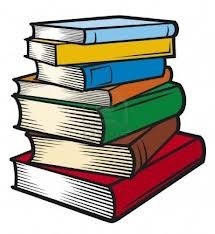 If you’re a member of the children’s literature community then you know Betsy Bird, Fuse8 blogger and Youth Materials Specialist at the NYPL. You probably also know that Betsy runs a monthly Children’s Literature Salon and on March 2nd the focus will be on diversity (learn more here). I hope you’ll join me, Betsy, Sofia Quintero, Connie Hsu, and Jacqueline Woodson as we discuss the challenge of creating equity in the children’s publishing industry. I’ve just joined the diversity committee at my job and it’s fascinating to see firsthand how the college gathers data in order to assess the progress it has or hasn’t made in meeting its diversity goals. Why can’t the publishing industry do the same?
If you’re a member of the children’s literature community then you know Betsy Bird, Fuse8 blogger and Youth Materials Specialist at the NYPL. You probably also know that Betsy runs a monthly Children’s Literature Salon and on March 2nd the focus will be on diversity (learn more here). I hope you’ll join me, Betsy, Sofia Quintero, Connie Hsu, and Jacqueline Woodson as we discuss the challenge of creating equity in the children’s publishing industry. I’ve just joined the diversity committee at my job and it’s fascinating to see firsthand how the college gathers data in order to assess the progress it has or hasn’t made in meeting its diversity goals. Why can’t the publishing industry do the same?


February 13, 2013
the next big thing: The Deep
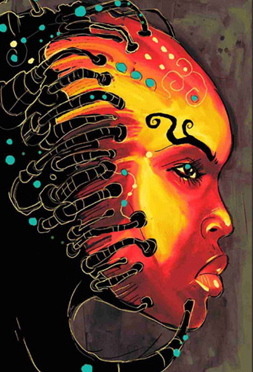 The Next Big Thing Hop: the traveling blog that asks authors whom they consider the NEXT BIG THING, and then has them pass along the questions for those authors to answer in their blogs.
The Next Big Thing Hop: the traveling blog that asks authors whom they consider the NEXT BIG THING, and then has them pass along the questions for those authors to answer in their blogs.
Thank you, Aker @ Futuristically Ancient for tagging me! Read hers here.
Rules: Answer ten questions about your current Work In Progress on your blog. Tag five writers / bloggers and add links to their pages so we can hop along to them next.
What is the working title of your book…
The Deep. I’ve already got the cover designed in my mind and hope to collaborate with illustrator John Jennings (that’s one of his afrofuturistic images above).
Where did the idea come from for the book?
My last novel, Ship of Souls, was set to be published in February 2012 and my editor asked me to consider writing a “Kindle Single” to help promote the book. I wrote a scene in which the female teen protagonist was nearly raped and that later became the foundation for a book told from Nyla’s point of view. I always knew that I wanted to write a trilogy—three novellas about the three friends (D, Nyla, and Keem) from Ship of Souls. Before I even finished that novel, I woke up one morning and heard someone ask, “Are you sure you’re fully human?” And I knew that The Deep would be about “the gift” Nyla inherited from the mysterious mother who abandoned her as a child.
What genre does your book fall under?
Urban fantasy.
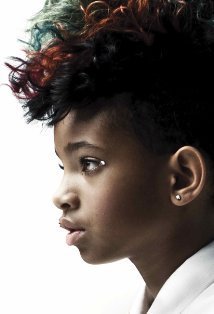 Which actors would you choose to play your characters in a movie rendition?
Which actors would you choose to play your characters in a movie rendition?
That’s hard—I think in a couple of years Willow Smith could play Nyla. I don’t see enough young black men on screen to be able to cast Keem or D, but I see kids on the train everyday who could fill those roles.
What is the one-sentence synopsis of your book?
When Nyla find herself at the center of a battle between good and evil, she must learn to wield the astonishing power she inherited from the mother who abandoned her as a child.
Will your book be self-published or represented by an agency?
I’d like to keep working with Amazon Publishing. My last two novels were published by AmazonEncore but my editor has moved to a new imprint and there’s a new children’s/YA editor here in NYC whom I haven’t met yet.
How long did it take you to write the first draft of your manuscript?
I don’t have a finished draft—I’m at 32K words and expect to wrap up by 35K. I don’t really write drafts. I take notes and write bits and pieces for a few months and then I sit down and pull everything together. I went to London for Xmas and wrote two thousand words, then I returned to Brooklyn and wrote 20K words in January. I’m hoping to finish up by the end of February. I revise, of course, but the manuscript gels fairly quickly.
What other books would you compare this story to within your genre?
I don’t know if I’ve read anything like this. I guess the mother-daughter dynamic could be compared to Parable of the Talents—The Deep shares that complex issue of legacy.
Who or what inspired you to write this book?
Nyla’s a fun character—she was my favorite in Ship of Souls, though I really tried to write an appealing male protagonist. Her feistiness, the way she questions her attraction to boys, her unique history (she was raised on a military base in Germany), all made me want to feature her in another book.
What else about your book might pique the reader’s interest?
This is perhaps my most explicitly feminist novel for young readers, and I suspect some will say it’s too dark for teens. But I love to write about the way teens handle power, and I want readers to see Brooklyn in a way they’ve never seen it before.
Below are my tags of other authors:



